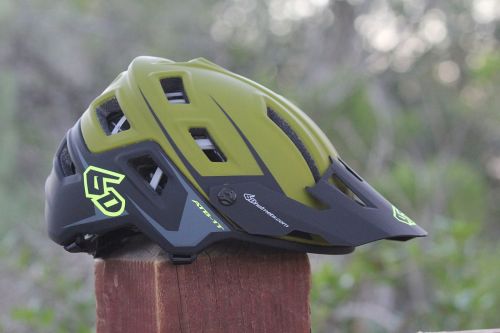BREA, Calif. (BRAIN) — When Bob Weber and Robert Reisinger launched 6D Helmets six years ago, they were betting on new technology to put them in the big leagues of helmet design. That technology has paid off as the company, along with its partner, Dynamic Research, won a prestigious $500,000 grant for its Omni-Directional Suspension technology or ODS for helmets. The award was announced Wednesday.
"Yesterday was a pretty exciting day for us," Weber said in an interview. "What's happened is very, very special for us. But the process took a lot longer than we thought," he added.
The money comes from a $60 million initiative funded by the National Football League, General Electric and Under Armour supported by the U.S. Commerce Department's National Institute of Standards and Technology (NIST).
6D, which will have a booth at Interbike, has applied some of its newest technology in its current line of helmets for mountain bikers. It also manufactures helmets for the motorcycle industry.
While testing ODS during the competition, 6D developed a more efficient and lighter version for use in its bicycle helmets. The company used the new design in its ATB-1T EVO Trail helmet, which has been available at specialty bike shops since March, Weber said.
This is the second grant the company has won as part of a Head Health Challenge, a four-year effort to better protect football players from brain concussions. Last year, as BRAIN reported, the company had won a $250,000 grant and was vying with four other competitors for the $500,000 award.
"The goal of this challenge is to support innovation and help stimulate the marketplace with next-generation materials and design, and the impressive work by Dynamic Research and 6D Helmets has the potential to do just that," said Jeff Miller, NFL executive vice president of Health and Safety Initiatives in a press release.
Robert Reisinger, director of engineering and co-founder of 6D Helmets, said, "The Challenge allowed us to exercise material testing and analysis that further unlocked the potential of our ODS technology.
"Over the course of the challenge, we gained a greater understanding of its capabilities by individually tuning for both linear and rotational forces to reduce brain injuring acceleration. Some of these new features are already supported in our latest product offerings," he added.
Part of the process was the development of new testing techniques by the NIST. "They had to develop special equipment to do the testing and they found that our technology was better than the control materials they were using," Weber said.
Asked whether their design would soon be incorporated into football helmets for the NFL, Weber said it's "way to early to say." But, he added, we're looking at all the opportunities for OSD technology to be applied to helmet designs.
OSD technology was originally developed in 2011 and was sold commercially in its 2013 bicycle and motorcycle helmet lines. During the Head Health Challenge, 6D and Dynamic Research used advanced computer modeling, finite element analysis, and a series of improvements to create a novel derivative of its technology with an unusual geometric structure.
The judges' decision was based on the new multi-impact material systems' performance, potential commercial application and novel design. It reduced certain measures of impact by more than 70 percent when compared with baseline foam material commonly used in protective gear.


